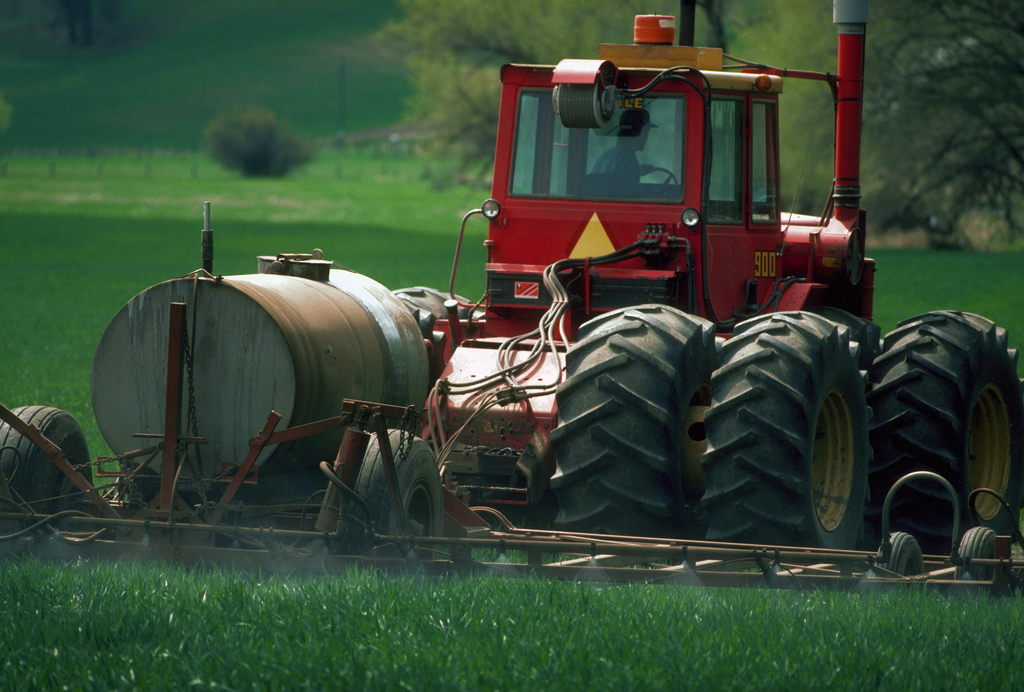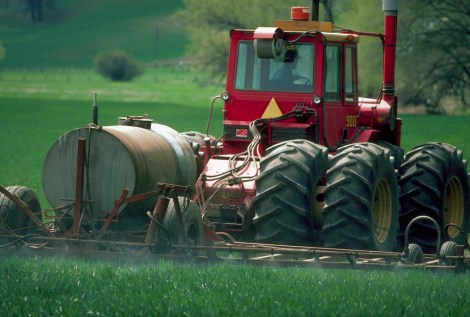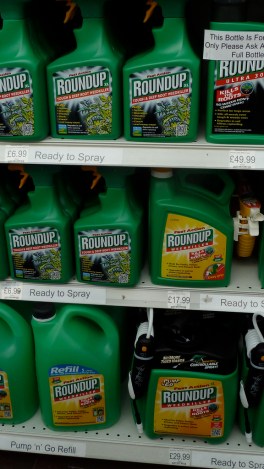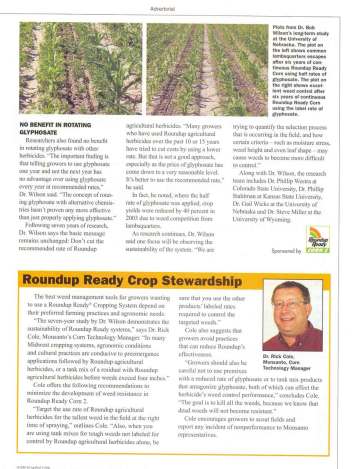To understand the environmental effects of GMOs, I started by looking at plants genetically modified to be insect-resistant — and concluded that they have, on balance, helped reduce overall insecticide use in U.S. farming. The picture isn’t so rosy with the other main trait that GM agribusiness promotes, herbicide tolerance.
While it’s clear that genetic engineering has reduced the amount of insecticides that farmers spray, it’s just as clear that it has encouraged a much larger increase in the use of the herbicide glyphosate. And while insect resistance is safeguarded by some (insufficient) regulations, there are no regulations to rein in the way that herbicide-tolerant plants encourage overuse of herbicides.
If insect-resistant plants have helped run the pesticide treadmill in reverse, as entomologist Bruce Tabashnik told me, herbicide tolerant plants are running it forward at full speed, increasing our reliance on harmful chemicals.
Those are broad strokes, and there are a couple caveats here. For one thing, the data on agricultural pesticide use is patchy and prone to interpretation. And — although government numbers show an increase in total herbicide use — farmers have been using much milder chemicals, chiefly glyphosate, the active ingredient in Roundup. Instead of just looking at the total pounds of the herbicides used, it seems like it would make more sense to do a little math: pounds x nastiness.
I asked Charles Benbrook, a research professor at Washington State University, about this, and he endorsed my simple equation. But Benbrook, who since 2004 has been putting out reports on pesticide use associated with genetically engineered plants, said there’s also a good reason to pay attention to the raw poundage of pesticides, which is exactly what he does.
“The reason I started doing this was that the biotech industry kept claiming that the GE crops on the market at the time were reducing pesticide use. And it was just factually incorrect if you looked at the increase in glyphosate use,” he said. “From the beginning I’ve always said that glyphosate is a great herbicide — it’s one of the safest on the market. But there are real consequences in using so much of it.”
The most obvious consequence has been the spread of glyphosate-resistant weeds. But, I asked Benbrook, can we really tie glyphosate-resistant weeds to GE crops? After all, farmers started using Roundup long before Monsanto invented Roundup Ready seeds.
The GM crops increased the evolutionary selection pressure on weeds, Benbrook said, because people started using gylphosate more regularly and during the cropping season, instead of just before or after harvest. Any weed that could survive gained an enormous competitive advantage and spread its seeds.
Why did GM lead to greater herbicide use? Bill Freese, at the Center for Food Safety, says it’s simple economics.
“If you are planting Roundup Ready seeds, there’s a strong incentive to only use Roundup,” Freese said. “The farmers say, ‘look, I’m paying extra for this trait — there’s a real financial incentive to make use of this trait.’”
And spraying glyphosate in conjunction with GM herbicide-tolerant crops was so easy and effective that agronomists started referring to it as “agricultural heroin.” It worked so much better than anything else that farmers became addicted. For farmers rotating between planting glyphosate-resistant soy and glyphosate-resistant corn, it was hard not to use glyphosate year in and year out as their primary form of weed control. When this happens, the National Research Council concluded, “strong selection pressure exists for the evolution of glyphosate-resistant weeds because the management tactics vary so little between the two crops.”
This wasn’t just irresponsible behavior by farmers, however: Monsanto encouraged these reckless practices, assuring farmers in advertisements that it was absolutely fine to use glyphosate every year. And this, of course, was a textbook method for breeding glyphosate-resistant weeds.
Unlike insect-resistant crops, which opened the door to alternative forms of pest management, herbicide-tolerant crops narrowed weed control options to a single obvious solution.
“They basically went to a 100 percent Roundup system,” said Carol Mallory-Smith, a professor of weed science at Oregon State.
Now, if your instinct is to cheer the fall of glyphosate, don’t be too hasty. The biotech response to that is to develop crops tolerant of much more dangerous herbicides — and to make a tidy profit in the process. As the Wall Street Journal reported:
[The major agro-chemical companies] are together spending hundreds of millions of dollars to develop genetically modified soybean, corn and cotton seeds that can survive a dousing by their herbicides, many decades old.
“It will be a very significant opportunity” for chemical companies, says John Jachetta, a scientist at Dow Chemical’s Dow AgroSciences and president of the Weed Science Society of America. “It is a new era.”
And there are already weeds that resist multiple herbicides. In the southern U.S., the cost of herbicides for growing cotton have more than quadrupled in recent years, and many farmers have simply given up.
It’s not this dire everywhere: In many places weeds are still well controlled. But many weed scientists are beginning to say that the focus on herbicides matched with transgenic crops has gone too far. As Mallory-Smith and five other scientists put it, in a letter published in the journal Weed Science [$ub. req.], “Are we as a discipline so committed to maintaining profits for the agrochemical industry that we cannot offer up realistic long-term solutions to this pressing problem?”
Supporters of GMOs point out that the spread of resistance is not the fault of a flaw in the technology. And in a narrow sense that’s true — the technology could have been used differently. But herbicide-tolerance is at the heart of a larger technological system that guides its use. Without regulators and industry prudently restricting this sort of GM technology, it can be self-limiting, even self-defeating. And in this case, it’s clear that industry was anything but prudent.
There’s one more twist to this story about herbicide tolerance, and it has to do with conservation tillage — where farmers leave their plants standing, or plow only lightly. I’ll look at that next.
More in this series:
- The genetically modified food debate: Where do we begin?
- The GM safety dance: What’s rule and what’s real
- Genetic engineering vs. natural breeding: What’s the difference?
- Is nature a cradle or a battlefield?
- Genetically engineered food: Allergic to regulations?
- Genetically modified seed research: What’s locked and what isn’t
- Is extremism in defense of GM food a vice?
- Elephant in the room: Why getting the GMO story straight is so hard
- Food for bots: Distinguishing the novel from the knee-jerk in the GMO debate
- Pointed talk: Michael Pollan and Amy Harmon dissect a GM controversy
- Golden Rice: Fool’s gold or golden opportunity?
- Golden apple or forbidden fruit? Following the money on GMOs
- Lesser of two weevils: GMOs vs. insecticides






